This article was co-authored by Laura Marusinec, MD. Dr. Marusinec is a board certified Pediatrician at the Children's Hospital of Wisconsin, where she is on the Clinical Practice Council. She received her M.D. from the Medical College of Wisconsin School of Medicine in 1995 and completed her residency at the Medical College of Wisconsin in Pediatrics in 1998. She is a member of the American Medical Writers Association and the Society for Pediatric Urgent Care.
There are 12 references cited in this article, which can be found at the bottom of the page.
This article has been viewed 244,015 times.
A scab is a protective crust that forms over a wound made of dried blood, blood fluids, and dried immune cells. A scab protects the wound, so you do not want to pull off the scab by force. Doing that can cause irritation, slow down the healing, and open the wound up to infection. As difficult as it can be if your acne scab is visible, if you try to pull off a scab before it is ready, you increase the chances that a scar will form. The key is to keep the scab soft, moisturized, and pliable while encouraging the healing that is going on beneath the scab. If you suffer from acne scars, there are methods to help the injury heal faster, but remember your acne has to go through the healing phases before they will disappear.
Steps
Getting Rid of Scabs Through Cleansing
-
1Wash the scabs every day. You should clean the scabbed area twice each day. You can use an acne cleanser or a gentle facial cleanser. Rub gently until dry afterwards.[1]
- Use a clean washcloth each time you wash your acne scabs. If you reuse the washcloths, you can spread bacteria, which may slow down the healing process.
-
2Clean with oil. After cleaning with soap, you can use an oil to help moisturize and remove the scabs. Apply an oil such as castor oil, coconut oil, olive oil, almond oil, mineral oil, or any other oil you wish. Use a clean washcloth to gently work the oil into the scab. Be gentle and use only slight pressure. Rinse well and re-moisturize.[2]
- This removes bits and pieces of the scab. However, you should only be removing those bits and pieces that fall off easily. Don’t force any scabs off.
- The scab should fall off within five to seven days. Some scabs may fall off earlier and some may take longer. Just don’t force it.
Advertisement -
3Use a warm compress. Soak a clean cloth in warm water and then ring it out. Press the compress to your acne scabs for about 10 to 15 minutes, twice a day. The moist heat helps to soften the scab, which will help them come off safely and naturally. It also can help the wound to heal.[3]
- Don’t scrub with the compress. Just hold it against the acne scabs.
-
4Take a bath with Epsom salts. Soaking in a bath filled with Epsom salts can help moisturize the scabs on your body and promote healing. Fill a tub with warm water and Epsom salts. Soak the areas containing the acne scabs in the bathwater for around an hour.[4]
- Repeat the process every day until the scab is removed.
- Avoid putting Epsom salt on your face.
Using Plantain Leaves to Get Rid of Acne Scabs
-
1Find plantain leaves. Plantain leaves come from flat, long, narrow-leafed plants that grow nearly everywhere, including most people’s backyards. There are many different varieties, but they all have vertical veins in the leaves.[5] Some people think they are weeds, but they have many medicinal properties. They can be used directly on wounds to protect the wound and promoting healing.[6] The leaves also have antibiotic properties.
- Most people don’t realize the plant in the backyard is plantain, mainly because there is another food called a plantain, which is a fruit like a banana. Plantain leaves are herbs and different from the cooking plantain, which is a fruit.[7]
- If you can’t find plantain leaves outside to pick, you can order dried plantain leaves and herbs from natural retailers. You can also buy pre-made ointments and salves made with plantain.
-
2Make a paste with fresh leaves. Pick 10 fresh plantain leaves. Slowly boil the leaves in about an inch of water until the leaves are soft. Remove the plantain leaves and mash them using the back of a spoon. Allow the mash to cool.[8]
- After the mixture has cooled, add a few drops of an oil of your choice. Good choices include almond oil, castor oil, or mineral oil.
- You can use dried plantain herbs, mix it with an oil, and boil the leaves to make a paste.
-
3Apply the paste to the scab. When you have finished making the paste, smooth it over the scabs. Then, cover the area with gauze or a bandaid.
- You can leave it on as long as you like. Put it on overnight and wash it off in the morning, or put it on and leave it until you shower.
-
4Use the paste on your face. If your acne scabs are on your face, apply the paste to the affected areas two to four times a day. Leave it on for 10 to 15 minutes. Rinse the paste off with warm water and pat your face dry.
Using Aloe Vera For Acne Scabs
-
1Cut a piece of fresh aloe. If you have an aloe vera plant, cut off a small piece. Squeeze the juice from the inside of the aloe sliver over the scab. Allow it to dry without wiping it away. Repeat this four to five times a day.[9]
- You can buy aloe leaves at many grocery stores in the produce section.
-
2Use an aloe vera gel. If you don’t have fresh aloe, you can buy aloe vera gel instead. Apply the gel to the scab using a Q-tip or a cotton ball. You can leave the gel on, or you can rinse it off after 15 to 20 minutes.[10]
- Repeat this four to five times a day.
-
3Try an aloe vera cream. Aloe vera comes in multiple types of products. You can use a commercial aloe vera cream, lotion, or ointment product. Visit your local pharmacy to choose the right aloe vera product for your acne scabs.[11]
-
4Recognize the need for aloe vera. Aloe vera has been used for many centuries as a healing promoter. It contains anti-inflammatory properties as well as wound-healing promoting properties.[12]
- The gel helps keeps the scab moisturized, which promotes healing.
Getting Rid of Acne Scabs Through Other Herbal Remedies
-
1Try onion or garlic juice. Apply a few drops of either onion or garlic juice to the acne scars with a Q-tip or a cotton ball. Allow the onion or garlic juice to dry. Then, if you don’t like the odor, rinse off with warm water. Repeat four to five times a day.
- You can also leave the onion or garlic juice on overnight.
- Onion and garlic juice can be irritating for some people. If the onion or garlic juice irritates your skin, use a different method.
- Both onion and garlic juice has anti-bacterial, antifungal, and healing properties and has been used to promote healing without scarring, particularly after surgery.[13] [14]
-
2Use honey. Honey has also has been used for centuries to promote healing.[15] Apply ½ teaspoon of honey to the acne scars with a Q-tip or a cotton ball. Allow the honey to stay on the wound for 20 to 30 minutes, covering it with a bandaid or gauze. Rinse off with warm water.
- Repeat four to five times a day or leave on overnight.
- Medicinal honeys such as Manuka honey has been the most studied, but you can use an organic honey and get similar results.
-
3Make a calendula oil mixture. Mix three to four drops of calendula oil with a carrier oil, like almond, castor, olive, or mineral oil. Apply the calendula oil mixture to the scabs with a Q-tip or a cotton ball. Leave it on. Apply four to five times a day.
- Calendula Oil has wound healing properties.[16]
- There are a number of calendula creams, lotions and ointments also available that you can use.
-
4
Expert Q&A
Did you know you can get expert answers for this article?
Unlock expert answers by supporting wikiHow
-
QuestionHow do I get rid of raw pimple scabs on my face overnight?
 Laura Marusinec, MDDr. Marusinec is a board certified Pediatrician at the Children's Hospital of Wisconsin, where she is on the Clinical Practice Council. She received her M.D. from the Medical College of Wisconsin School of Medicine in 1995 and completed her residency at the Medical College of Wisconsin in Pediatrics in 1998. She is a member of the American Medical Writers Association and the Society for Pediatric Urgent Care.
Laura Marusinec, MDDr. Marusinec is a board certified Pediatrician at the Children's Hospital of Wisconsin, where she is on the Clinical Practice Council. She received her M.D. from the Medical College of Wisconsin School of Medicine in 1995 and completed her residency at the Medical College of Wisconsin in Pediatrics in 1998. She is a member of the American Medical Writers Association and the Society for Pediatric Urgent Care.
Board Certified Pediatrician Probably not. If the scab is raw, then apply a thick moisture ointment like Vaseline or Aquaphor to the area several times a day to keep it moist. You could also try a little honey or aloe vera to the area a few times a day. Don't pick the area! You can always use a small amount of a tinted moisturizer or cover-up if you are worried about how the scab looks in public.
Probably not. If the scab is raw, then apply a thick moisture ointment like Vaseline or Aquaphor to the area several times a day to keep it moist. You could also try a little honey or aloe vera to the area a few times a day. Don't pick the area! You can always use a small amount of a tinted moisturizer or cover-up if you are worried about how the scab looks in public. -
QuestionIs there is way to get rid of a scab in 36 hours?
 Laura Marusinec, MDDr. Marusinec is a board certified Pediatrician at the Children's Hospital of Wisconsin, where she is on the Clinical Practice Council. She received her M.D. from the Medical College of Wisconsin School of Medicine in 1995 and completed her residency at the Medical College of Wisconsin in Pediatrics in 1998. She is a member of the American Medical Writers Association and the Society for Pediatric Urgent Care.
Laura Marusinec, MDDr. Marusinec is a board certified Pediatrician at the Children's Hospital of Wisconsin, where she is on the Clinical Practice Council. She received her M.D. from the Medical College of Wisconsin School of Medicine in 1995 and completed her residency at the Medical College of Wisconsin in Pediatrics in 1998. She is a member of the American Medical Writers Association and the Society for Pediatric Urgent Care.
Board Certified Pediatrician Unfortunately, no. Follow the instructions in the article to get rid of a scab, but it will take at least a few days. If you are in a hurry for it to look better, try applying a tinted moisturizer on the scab. This is better than applying makeup, but you could put on a small amount of makeup if you have a special event.
Unfortunately, no. Follow the instructions in the article to get rid of a scab, but it will take at least a few days. If you are in a hurry for it to look better, try applying a tinted moisturizer on the scab. This is better than applying makeup, but you could put on a small amount of makeup if you have a special event.
Warnings
- You should never pick at your scabs, though you may be tempted. Picking at scabs can cause scarring and spread infection.⧼thumbs_response⧽
References
- ↑ http://www.healthcare-online.org/How-to-Heal-Scabs-Fast-on-Face.html
- ↑ Bedi MK, Shenefelt PD. Herbal therapy in dermatology. Archives of Dermatology. 2002 Feb 1;138(2):232-42.
- ↑ http://www.newhealthadvisor.com/How-to-Heal-Scabs-Fast.html
- ↑ http://www.newhealthadvisor.com/How-to-Heal-Scabs-Fast.html
- ↑ http://gwens-nest.com/herb-identification-plantain/
- ↑ Bedi MK, Shenefelt PD. Herbal therapy in dermatology. Archives of Dermatology. 2002 Feb 1;138(2):232-42.
- ↑ http://www.livescience.com/15322-healthiest-backyard-weeds.html
- ↑ Bedi MK, Shenefelt PD. Herbal therapy in dermatology. Archives of Dermatology. 2002 Feb 1;138(2):232-42.
- ↑ http://www.newhealthadvisor.com/How-to-Heal-Scabs-Fast.html
- ↑ http://www.healthcare-online.org/How-to-Heal-Scabs-Fast-on-Face.html
- ↑ Davis RH, Donato JJ, Hartman GM, Haas RC. Anti-inflammatory and wound healing activity of a growth substance in Aloe vera. Journal of the American Podiatric Medical Association. 1994 Feb;84(2):77-81.
- ↑ Davis RH, Donato JJ, Hartman GM, Haas RC. Anti-inflammatory and wound healing activity of a growth substance in Aloe vera. Journal of the American Podiatric Medical Association. 1994 Feb;84(2):77-81.
- ↑ Singer AJ, Clark RA. Cutaneous wound healing. New England journal of medicine. 1999 Sep 2;341(10):738-46.
- ↑ Jackson BA, Shelton AJ. Pilot study evaluating topical onion extract as treatment for postsurgical scars. Dermatologic surgery. 1999 Apr 1;25(4):267-9.
- ↑ Lusby PE, Coombes A, Wilkinson JM. Honey: a potent agent for wound healing?. Journal of Wound Ostomy & Continence Nursing. 2002 Nov 1;29(6):295-300.
- ↑ Preethi KC, Kuttan R. Wound healing activity of flower extract of Calendula offlcinalis. Journal of basic and clinical physiology and pharmacology. 2009;20(1):73-80.
- ↑ http://www.newhealthadvisor.com/How-to-Heal-Scabs-Fast.html
- ↑ http://www.webmd.com/vitamins-supplements/ingredientmono-816-apple%20cider%20vinegar.aspx?activeingredientid=816&activeingredientname=apple%20cider%20vinegar
About This Article
To get rid of acne scabs, wash the scabbed area twice each day with a gentle cleanser. Afterwards, apply an oil such as castor oil or coconut oil to gently remove the scabs a little bit at a time. You can also use plantain leaves, which grow in many backyards, to protect your skin and promote healing. To get the medicinal benefits of plantain leaves, boil 10 leaves in water to soften them and then mash them into a paste. Apply the paste to the scabbed area for 10 to 15 minutes 2 to 4 times per day. For more tips from our Medical co-author, like how to remove your acne scabs with aloe vera, keep reading!
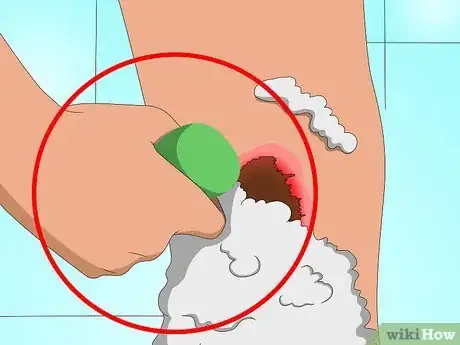
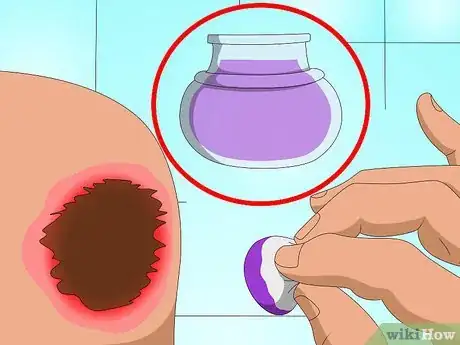
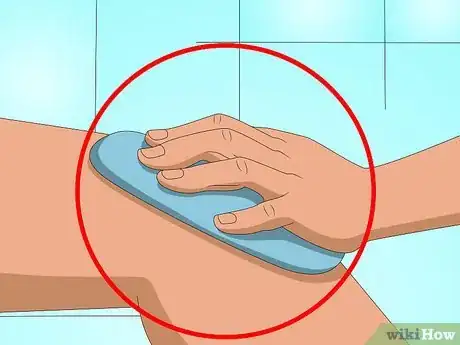
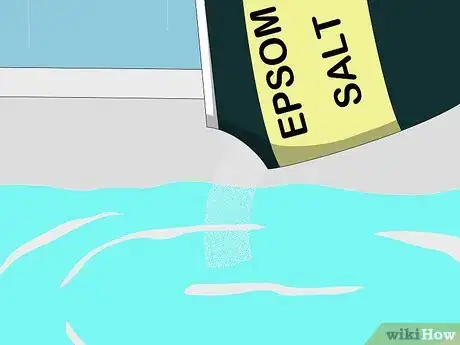

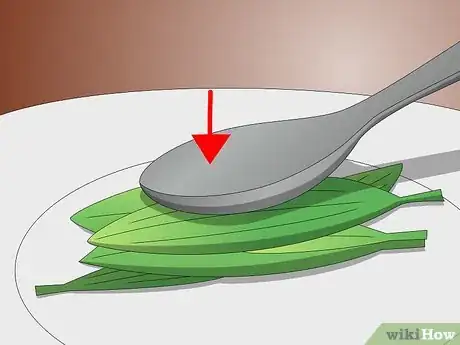

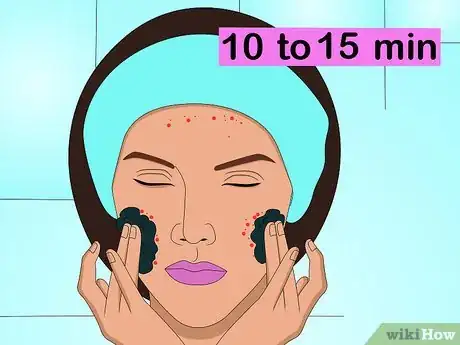

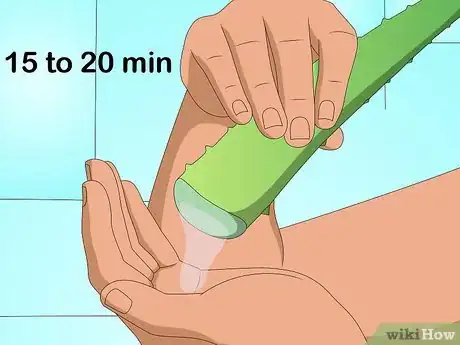

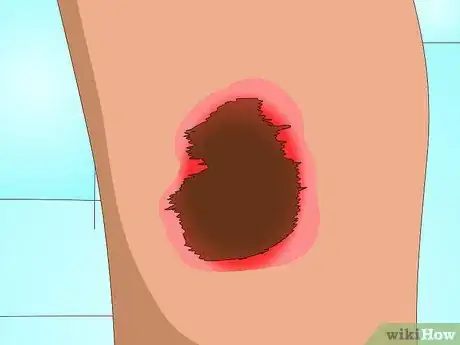
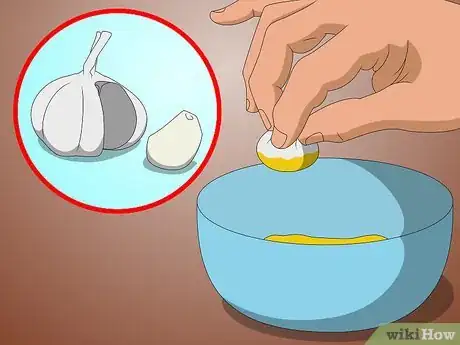
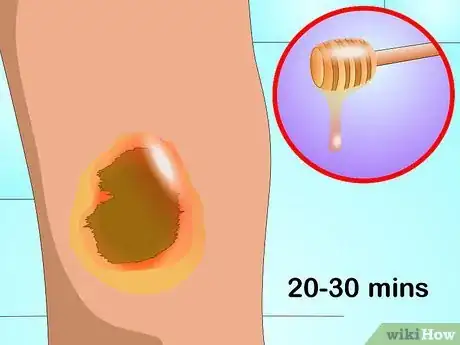
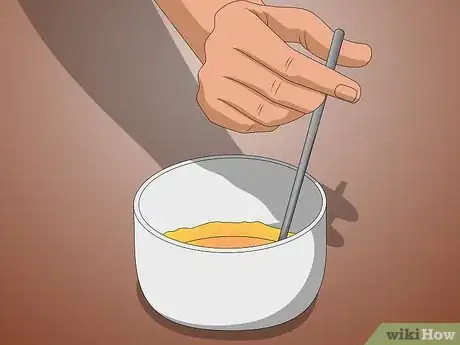
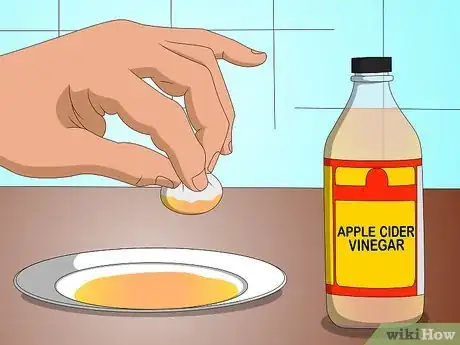
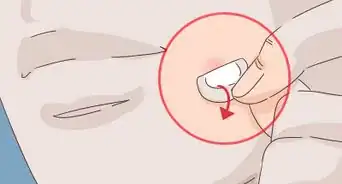
-Step-11-Version-2.webp)
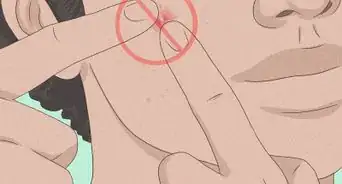

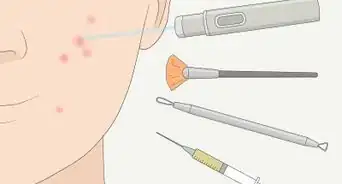
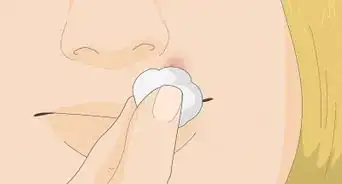


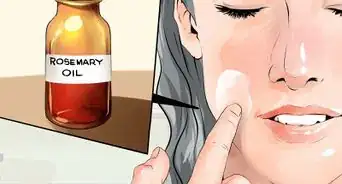










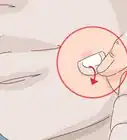
-Step-11-Version-2.webp)




































